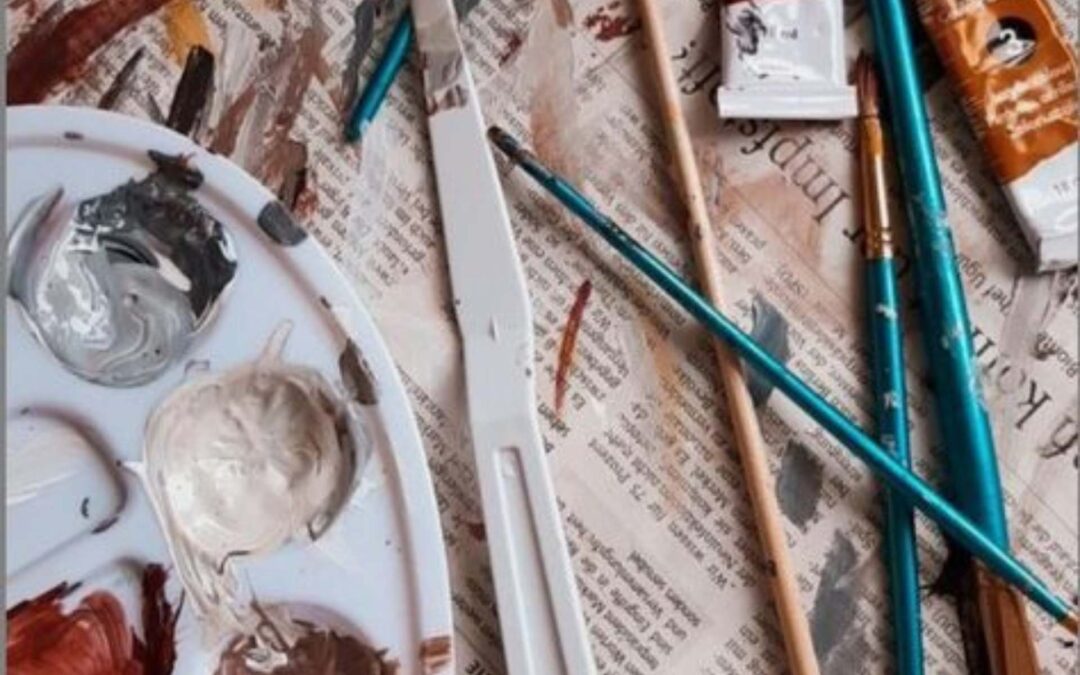Therapy can be an overwhelming process to begin in the midst of struggle. It feels as though all of our energy goes into just getting one foot into the door. For most people, entering into a state of vulnerability can be very uncomfortable. It can be daunting to sit in front of a stranger and let them in on some of our darkest times that we have maybe never shared with anyone. As a clinician, it is my main priority to offer a space where my clients feel safe and free to express their thoughts, feelings, and struggles in whatever way they please. I have come to roadblocks in my work with clients where I feel as though they are struggling with expression or maybe they just can’t find the right words to explain what they want to bring into session to work on together. When this happens, depending on the client, I like to lean towards using art and other creative outlets.
Using art, whether it be painting or drawing, can be a helpful tool for clients to express themselves. While I was an intern, I worked with a younger client around the age of 9. Oftentimes with children, it can be hard to use words to articulate feelings. We don’t often see that they have the right language because they simply just have not learned it yet. Therapy is a great place for a client to learn helpful language around emotions and mental health. However, I saw with this particular client that shifting towards using art and pictures to express emotions was very helpful for her. We made a lot of progress when it came to understanding the internal turmoil that was going on inside just by simply drawing what it looked like on a piece of paper. That was a moment during my internship program that I really felt the impact that art can have on a client. It was such an incredible moment! It not only emphasized the benefit of art and creative expression in therapy but also showed me that this was a technique that helped my client speak about what she was battling inside. I knew that moving forward art was something that we would make a point to integrate into our sessions. Another form of creative expression is sand tray therapy. Sand tray is a technique that can be used in sessions where the client utilizes figurines to express and explain whatever they are currently struggling with in their life or to help the clinician get to know the client better. When I have done sand tray therapy with clients, it looks a lot like me giving a prompt that invites thought and feelings for the client to then express to me by setting up a scene using the figurines. I have used it to get to know more surface level information about a client like how they would depict their family or have them show me a recent experience that brought them joy. I find it fascinating observing clients while they decide how they are going to depict what they are thinking about in their head regarding the prompt I gave to them. Sand tray can give the client another outlet that makes them feel more comfortable with talking to their therapist that looks different than two people sitting across from each other.
Lastly, art and creative expression during therapy can bring a sense of calmness and peace during a session. I have sat with countless clients that ask to color while talking about life stressors and other difficult things happening in their lives. Sometimes clients just need something to do with their hands that is not a fidget toy. Coloring can be helpful to keep the client grounded during the session. Art and creative expression can be a helpful tool in the reduction of anxiety during therapy and outside of the office. I have recommended coloring books, as a helpful coping mechanism, when it comes to certain situations, such as flight anxiety. If you are having a hard time feeling calm or needing a new outlet of expression when it comes to emotions, maybe try something with art and see if it takes you anywhere.

